Mass Concrete:
Important Point
Large bridge piers, foundations, and such as dams like the massive structure, the mass concreting technique is used. For also, mass concrete strength, economy, uniformity, and other factors considered should take into account.
The temperature shrinkage is the major problem in mass concrete work.
To prevent shrinkage, one must have excellent control of early setting the mass concrete intended for a large structure.
In mass concrete, the water-cement ratio reaction the temperature rise within a large concrete mass.
And in mass concrete, if the heat is not quickly dissipated, it can be quite high.
To restrained volume change associated with a decline in temperature as the heat of hydration is dissipated, significant tensile stress and strain may result.
What Is Mass Concrete?
In mass concrete, often referred to as mass concrete means, the heat of hydration may increase the temperature considerably due to the greater mass of the concrete.
This type of concrete is known as define mass concrete.
Large bridge piers, foundations, and such as dams like the massive structure the mass concreting technique used is known as mass concrete.
The low slump and large size of aggregate are used in mass concrete to reduce the amount of cement in the concrete.
In mass concrete, to obtain a durable structure with more economy, the mass concrete should be properly designed, placed, and cured.
In mass concrete to restrained volume change associated with a decline in temperature as the heat of hydration is dissipated, the significant tensile stress and strain may result.
To prevent shrinkage, one must have excellent control of early setting the mass concrete intended for a large structure.
Mass Concrete Underpinning:
In controlled stages, mass concrete slab is the most common form of underpinning and involves excavating to a depth where suitable bearing strata exists.
This process is crucial as it is the most important characteristic of mass concrete that differentiates its behavior from that of structural concrete.
In mass concrete, before the next ‘pin’ is excavated, The first excavation is filled with concrete and allowed to cure.
Between the new and old foundations, a dry sand cement packing mortar is rammed form transferring the building load to the new pin.
For shallow depth underpinning, this method is suitable.
Some Techniques of Mass Concrete Underpinning:
- The underpinning technique, often discussed in mass concrete ppt, involves existing footings down to a greater depth where stable soil of a suitable bearing capacity exists
- A failing section of the building by extending the construction of a new foundation beneath.
- In a pre-determined sequence, the mass concrete is achieved by excavating individual bases in short lengths.
- After excavated to the appropriate depth, and before concreting, supervisory staff and building control, inspect the excavation that the ground is free from soft spots, tree roots, etc.
- The base is backfilled with concrete when the excavation has been approved; shutters are set in position.
- Between the underside of the footing and the top of the base, the concrete is usually cast to leave a narrow gap.
- When underpinning is constructed in shrinkable clay, low-density polystyrene is usually installed.
Useful Article for You
- What Is Composite Wood
- What Is the Difference Between a Shower Pan and a Shower Base?
- What Is Raft
- What Is a Window Panel
- What Is Rebar Made Of
- What Is Crane
- What Is a Frame Structure
- What Is the Measurement for a Queen Size Bed
- What Is Considered Livable Space
- What Is One Way You Can Save Electricity?
- What Is Mdf Mean
- What Is a Bundle of Shingles
- What Is a Gallon of Water Weigh
- What Is Window Sash
- Excavation Rate Per Cubic Meter
- What Is a Sieve Analysis
- What Is the Little Black Diamond on a Tape Measure
- What Is the Difference Between a Bolt and a Screw?
- What Is Overhang
- What Is Sand Blasting
- What Is a Walk in Basement
- What Is Quarrying
- What Is a Concrete Slump Test
- What Is a Weir
- What Is Road Made Of
- What Is a Cantilever?
- What Is a Contour
- What Is a Rolled Curb
- What Is an Abutment Bridge
- What Is a Beam Bridge Used for
- What Is a Plumbing Fixture
- What Is Waterlogged
- What Is the Strongest Shape to Use When Designing a Bridge
Properties of Mass Concrete:
The properties of mass concrete are below.
- Workability.
- Water Tightness.
- Durability.
- Strength.
1. Properties of Mass Concrete: Workability
An essential property of mass concrete is workability.
To produce full compaction, the workability determines the amount of useful internal work necessary.
For mass concrete works, uniformity of workability is essential.
And the economy of mass concrete generally requires low cement content. For mass concrete, workability should be optimum.
2. Properties of Mass Concrete: Water Tightness
For hydraulic structures such as dams, large bridge piers, and foundation, for the massive structure, Watertight ness is an important property of concrete.
To the concrete mix to improve water tightness, some pozzolana should be added.
By using good quality aggregate, low water-cement ratio, good consolidation during placing, and proper curing, Lean mixes used in mass concrete.
Concrete should be impermeable, and also this can achieve.
3. Properties of Mass Concrete: Durability 
The prevention ability of concrete from chemical attack, weathering action, and abrasion is known as durability.
The durability of concrete depends upon some factors like mix design, workmanship, placing, and curing.
A properly cured and concrete with a low water-cement ratio correctly consolidated provides durable concrete. By careful selection of materials, we can improve the chemical resistance of concrete.
And by entrainment of a minute are bubbled into the concrete weathering durability can be improved.
4. Properties of Mass Concrete: Strength
To avoid failure, the strength of concrete defines as the resistance that concrete provides against a load.
Instead of ordinary cement concrete, Sometimes it is economical to add pozzolana or use portland pozzolana cement.
The strength of mass concrete depends on the water-cement ratio, quality of aggregates, compaction, curing, etc.
The plasticity and workability of concrete also increase by pozzolana.
Mass Concrete Specification:
Large size aggregates are preferred for mass concrete; it is concrete with a higher proportion of cement with a lesser proportion of cement.
Large bridge piers, foundations, and such as dams like the massive structure, the mass concreting technique is used. The temperature shrinkage is the major problem in mass concrete work.
To prevent shrinkage, one must have excellent control of early setting the mass concrete intended for a large structure.
Materials Are Used for Mass Concrete.
- Portland Cement with Low Heat of Hydration.
- Pozzolanas.
- Aggregate.
- Admixture.
- Mixing Water.
- Coolants.
1. Portland Cement with Low Heat of Hydration:
2. Pozzolanas Used for Mass Concrete:
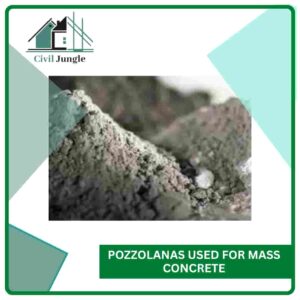
3. Aggregate Use for Mass Concrete:

A 40 mm aggregate can use for dams. If the fine aggregate to the total aggregate ratio should below.
4. Admixture Use for Mass Concrete:

After the addition of superplasticizers, Mass concrete to the pump should provide with high range water reducing and retarding admixture to provide 12-18 mm.
5. Mixing Water for Mass Concrete:
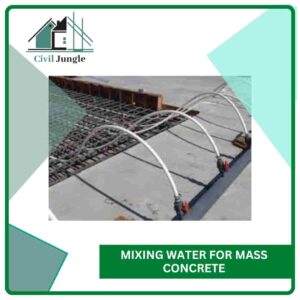
6. Coolants for Mass Concrete:

The water will help when the addition of finely chopped ice instead.
Mass Concrete Foundation:
A mass fill foundation, also known as a mass concrete foundation, is defined as having dimensions large enough to require measures to be taken.
This is essentially what is mass concrete and where it is used.
Large bridge piers foundation, and such as dams like the massive structure the mass concrete is used.
The heat of hydration of mass concrete is more than of other concrete because of the large amount of concrete.
To cope with the generation of heat from the hydration of the cement and attendant volume change to minimize cracking.
The temperature shrinkage is the major problem in mass concrete foundation work.
How Much Mass Density of Concrete?
A mass density of concrete is a normal concrete weight is 2400 kg per cubic meter.
The water and cement content, amount of entrained air, and the density of aggregate upon these factors, the density of mass concrete is depending.
For the lightweight concrete, the density is 1920 kg per cubic meter and cubic foot 116 lbs.
It contains the concrete weight can vary depending on the air and moisture content.
How to Mass Concrete Temperature Monitoring?
The mass concrete temperature we can monitor in two ways that’s are below.
- To monitor the temperature of mass concrete, low heat of hydration cement or blended such as PCC or is are being.
- To monitoring temperature of mass concrete large size aggregate 75 to 150 mm and high aggregate content up to 80% of total aggregate.
- Use of ice flakes up to about 70% of mixed water, pre-cooling of mixed water.
- By circulating very cold water through an embedded thin steel pipe.
- Leading to heat loss use aggregate having higher thermal diffusivity, which results in a lower maximum temperature.
Useful Article for You
- How Much Does a Yard of Concrete Weigh
- How Tall Is a Door
- How Many Stairs in a Flight
- How Many Bags of Concrete in a Yard
- How to Get Burnt Smell Out of Microwave
- How Far Apart Should Fence Posts Be
- How Are Bridges Built Over Water
- How Many People Died Building the Great Wall of China
- How to Draw House
- How to Build a Lean to Roof
- How Many Bags of Concrete for 1 Yard
- How Much Does Cinder Block Cost
- How to Get a House for Free
- How Much Does It Cost to Soundproof a Room
- How to Read a Measuring Tape in Meters
- How to Mount a TV on a Brick Wall
- How Many Brick Are in a Cube
- How Is Transported Soil Different from Residual Soil
- How to Use Washers
- How to Get Property for Free
- How Is Tar Made
- How Much Does Gallon of Water Weight?
- How Many Tiles Do I Need?
- How Much Does It Cost to Build a Pergola?
- How Much Does a Concrete Slab Cost?
- How Much Does a Yard of Gravel Weigh?
- How Many Shingles Do I Need for a 24×24 Garage?
- How to Remove Paint from Concrete Without Chemicals
- How to Cover Concrete Walls in Basement
- How to Find Wall load
- How to Build a Cavity Wall
- How Much Does a Heated Driveway Cost
- How Much Spray Foam Do I Need
- How to Get Blood Out of Carpet
- How to Mix Concrete
- How to Find the Contour Interval
- How to Identify Zero Force Members
- How To Install A Welded Wire Fence
- How to Tell If a Wall Is Load Bearing
- How to Replace Outdoor Faucet
- How to Measure Pipe Size
- How to Build a Pier and Beam Foundation
- How to Use Hydraulic Cement
- How to Get Sand in Raft
- How to Patch Drywall Ceiling
- How to Draw a Mansion
Advantage of Mass Concrete:
There have been many mass concrete advantages and disadvantages.
Some of the advantages are listed below
- The solid structures above 80cm are made of mass concrete.
- The mass concrete frequently contains a large volume of concrete.
- It’s an advantage that the large volume can set in a short time.
- Another advantage of mass concrete is where large bridge piers, foundation, and such as dams like the massive structure the mass concreting technique is used.
- In mass concrete, to obtain a durable structure with more economy, mass concrete is used.
- Another advantage of mass concrete is to restrained volume change associated with a decline in temperature as the heat of hydration is dissipated.
- To prevent shrinkage, one must have excellent control of early setting the mass concrete intended for a large structure. This is an important advantage of mass concrete.
Disadvantage of Mass Concrete:
There are have many disadvantages of mass concrete as like advantages. That’s below-
- The disadvantage of mass concrete is the water-cement ratio reaction; the temperature rises within a large concrete mass.
- The second disadvantage of mass concrete is the temperature shrinkage is the major problem in mass concrete work.
- With the use of a large quantity of concrete, the structure construction cost will be increased. This is a common disadvantage of mass concrete.
Mass Concrete:
Mass concrete is any volume of concrete with dimensions large enough to require that measures be taken to cope with the generation of heat from hydration of the cement and attendant volume change to minimize cracking. The one characteristic that distinguishes mass concrete from other concrete work is thermal behavior.
What Is Mass Concrete?
Mass concrete is defined by American Concrete Institute Committee 207 as “any volume of concrete with dimensions large enough to require that measures be taken to cope with the generation of heat from hydration of cement and attendant volume change to minimize cracking.”
Mass Concrete Underpinning:
Mass concrete is the most common form of underpinning, and involves excavating a segment of ground below the existing building foundation in controlled stages, to a depth where suitable bearing strata exists. The excavation is then filled with concrete and allowed to cure before the next ‘pin’ is excavated.
Properties of Mass Concrete:
Mass concrete is defined by the American Concrete Institute as: “any volume of concrete in which a combination of dimensions of the member being cast, the boundary conditions, the characteristics of the concrete mixture, and the ambient conditions can lead to undesirable thermal stresses, cracking, deleterious chemical.
Mass Concrete Specification:
Structural mass concrete is defined as any concrete footing with a least dimension greater than 5 feet (1.5 m) or other concrete placements with a least dimension greater than 4 feet (1.2 m). Additional constraints are required on placements with a least dimension greater than 6.5 feet (2 m).
Mass Concrete Foundation:
Mass concrete is defined by American Concrete Institute Committee 207 as “any volume of concrete with dimensions large enough to require that measures be taken to cope with the generation of heat from hydration of cement and attendant volume change to minimize cracking.”
How Much Mass Density of Concrete?
As for concrete itself, the density of concrete of normal weight is about 2,400 kg per cubic meter or 145 lbs. per cubic foot.
How to Mass Concrete Temperature Monitoring?
- Cold Weather T = [0.22(TsWs + TaWa + TcWc) + TwWw] / [0.22 (Ws + Wa +Wc) + Ww]
- Hot Weather T = [0.22(TsWs + TaWa + TcWc) + TwWw ¡V 112Wi] / [0.22 (Ws + Wa + Wc) + Ww + Wi]
- Transportation Temperature Factors (For revolving drum mixers) T = 0.25 (tr-ta)
- Transportation Temperature Factors (For covered dump body) T = 0.10 (tr ¡V ta)
- Transportation Temperature Factors (For open-dump body) T = 0.20 (tr ¡V ta)
Advantage of Mass Concrete:
Mass concrete is made with solid structures (> 80 cm). These structures frequently contain a greater volume. It signifies that large volumes of concrete should be set up in a short time. It needs highly well-organized planning and competent methods.
Disadvantage of Mass Concrete:
Disadvantages of this system include: There are large amounts of excavated material to be disposed of. There are large amounts of concrete to be imported to construct the bases. Excavations and bases are difficult to construct in unstable or water-logged ground.
Mass Per Unit Volume of Concrete:
| Concrete Volume Weight Chart: | ||
|---|---|---|
| Unit | Kilogram | Pound |
| cubic meter of concrete | 2,406.53 kg/m^3 | 5,305.49 lb/m^3 |
| cubic yard of concrete | 1,839.92 kg/yd^3 | 4,056.34 lb/cu yd |
| cubic foot of concrete | 68.15 kg/ft^3 | 150.23 lb/cu ft |
Which Material Used in Mass Concrete?
Mass concrete is basically concrete with a higher proportion of coarse aggregate and a lesser proportion of cement, Large size aggregates are preferred for mass concrete. Strength, economy, uniformity, and all other factors considered for normal concrete should take into account for also mass concrete.
Where Is Mass Concrete Used?
Mass concrete is usually associated with large, poured in-situ concrete structures such as dams, bridge piers, foundations to very tall buildings and other large volume placements which are at least 1m-deep. In many cases, mass concrete is unreinforced and therefore strong in compression but weak in tension.
What Size Is Mass Concrete?
If you know the density, the mass per unit volume of a material (such as concrete), and the volume of the material, you can multiply the density times volume to determine the mass, and, from there, the weight.
What Is the Purpose of Mass Concrete?
Mass concrete is any volume of concrete with dimensions large enough to require that measures be taken to cope with the generation of heat from hydration of the cement and attendant volume change to minimize cracking.
Like this post? Share it with your friends!
Suggested Read –
- Define Workability
- Concrete Retarder
- Plate Bearing Tests
- Plywood Tensile Strength
- Weight of Materials Per Cubic Foot
- Civil Engineering Software | List of Civil Engineering Software | List of Engineering Software
- What Is Sewerage System | Types of Sewerage System | Why We Need a Partially Separate System | How Does a Sewage Treatment Plant Work
- What Is Kelly Ball Test | Test Procedure of Kelly Ball Test | Use of the Kelly Ball | Advantages of Kelly Ball Test | Disadvantages of Kelly Ball Test
- 9 Types of Curing | What Is Curing of Concrete | Why Curing Is Important | Minimum Curing Period for Concrete Cement | How Long Does It Take for Concrete to Dry
- What Is Micropile | Types of Micropile | Common Uses of Micropile | Advantages & Disadvantages of Micropiles | Micropile Vs Typical Pile | How Are Micropiles Installed
Originally posted 2023-08-27 13:50:37.
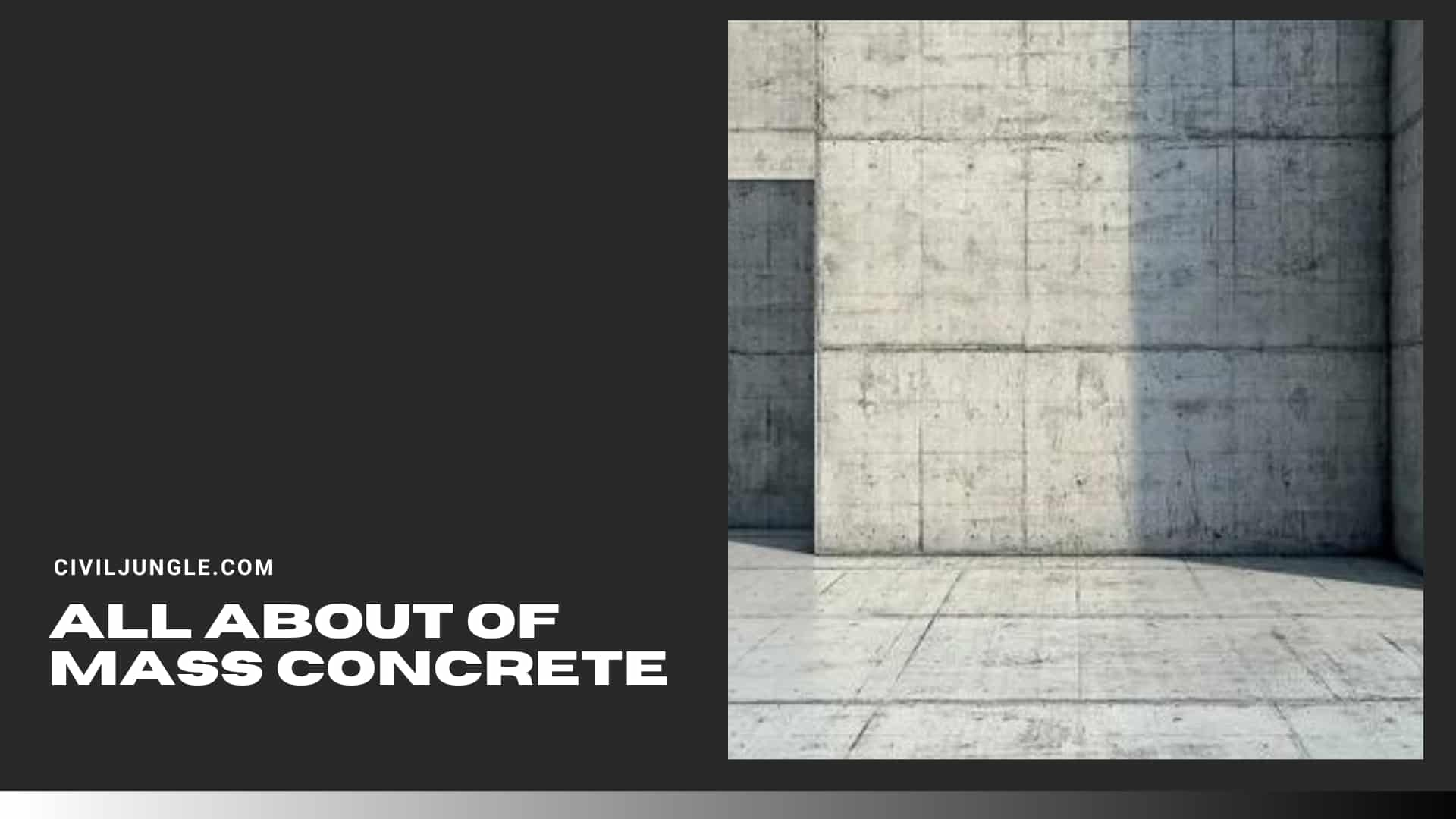
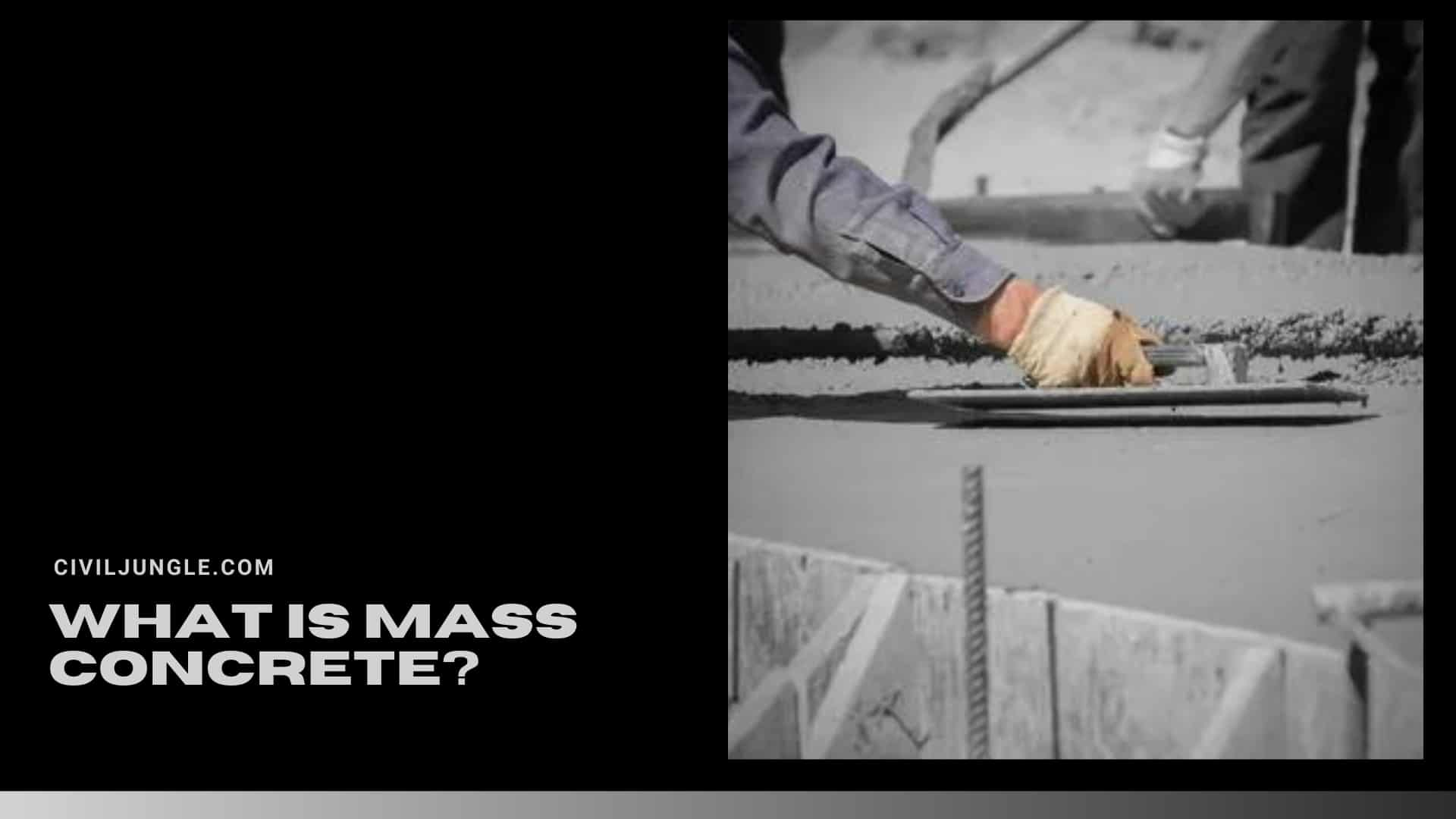
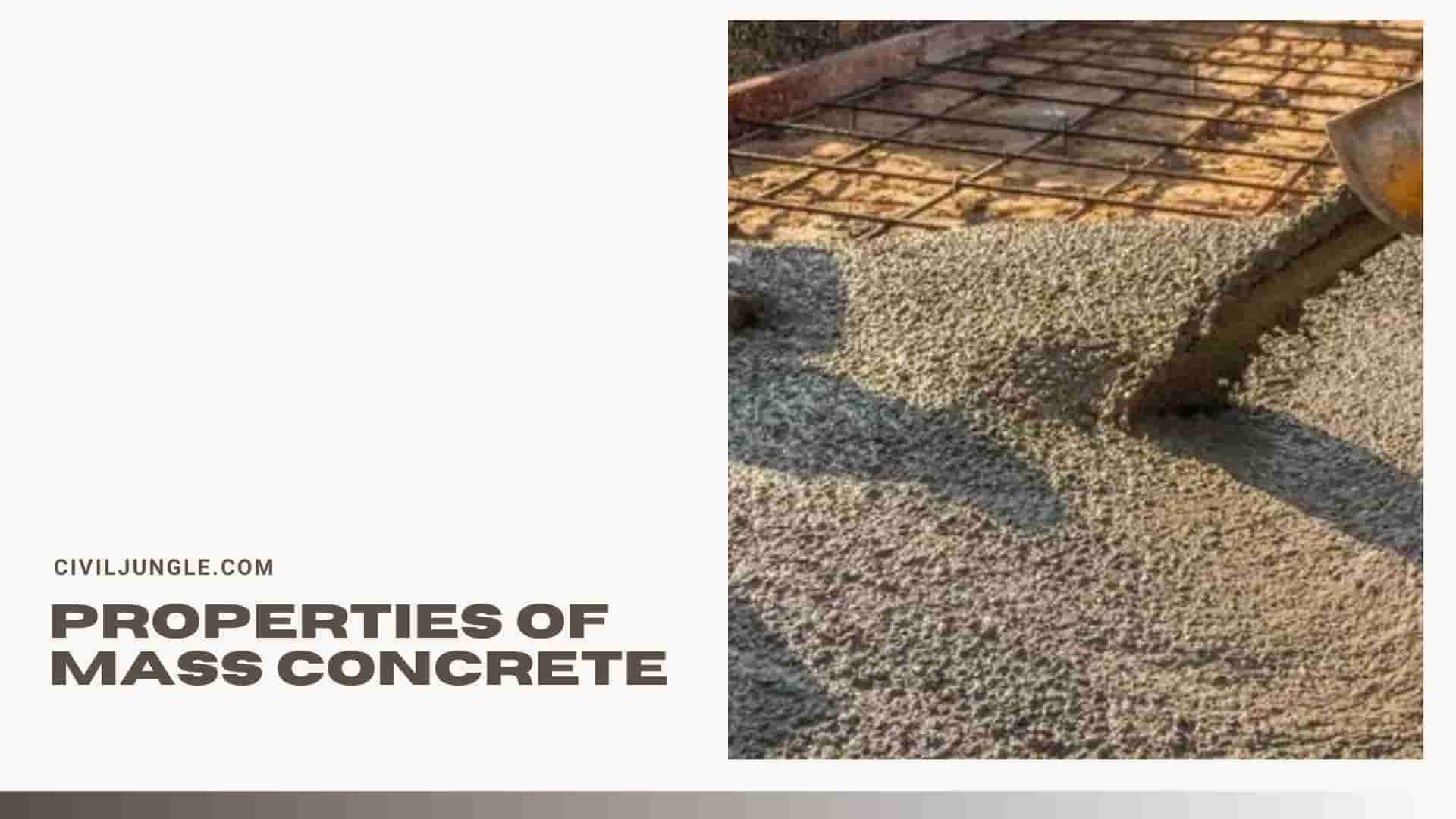

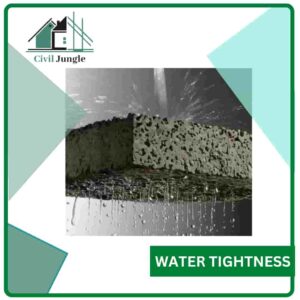

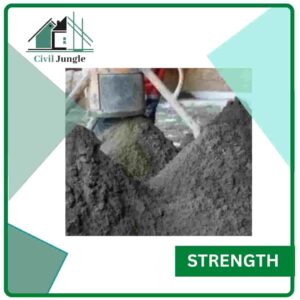
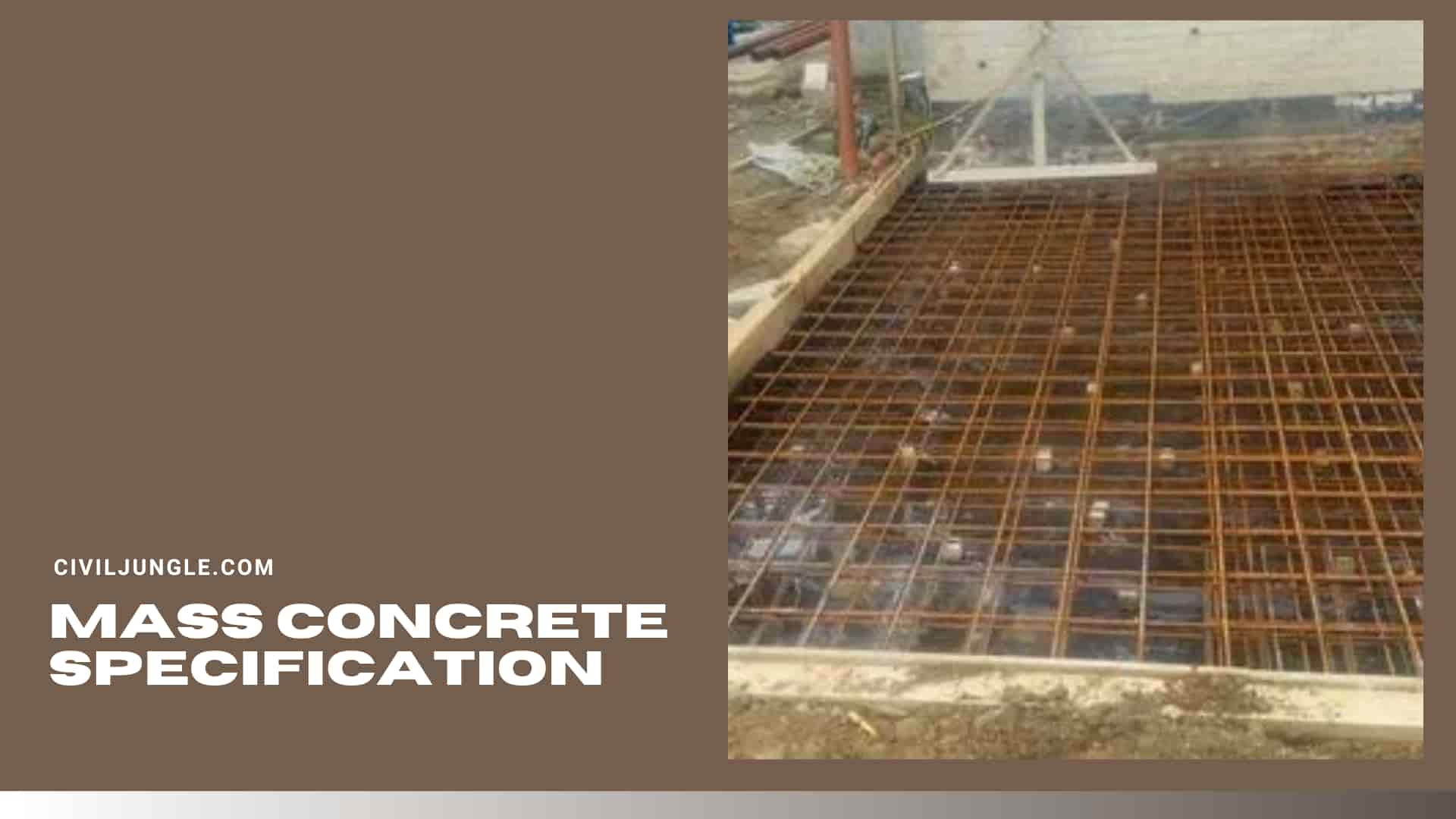
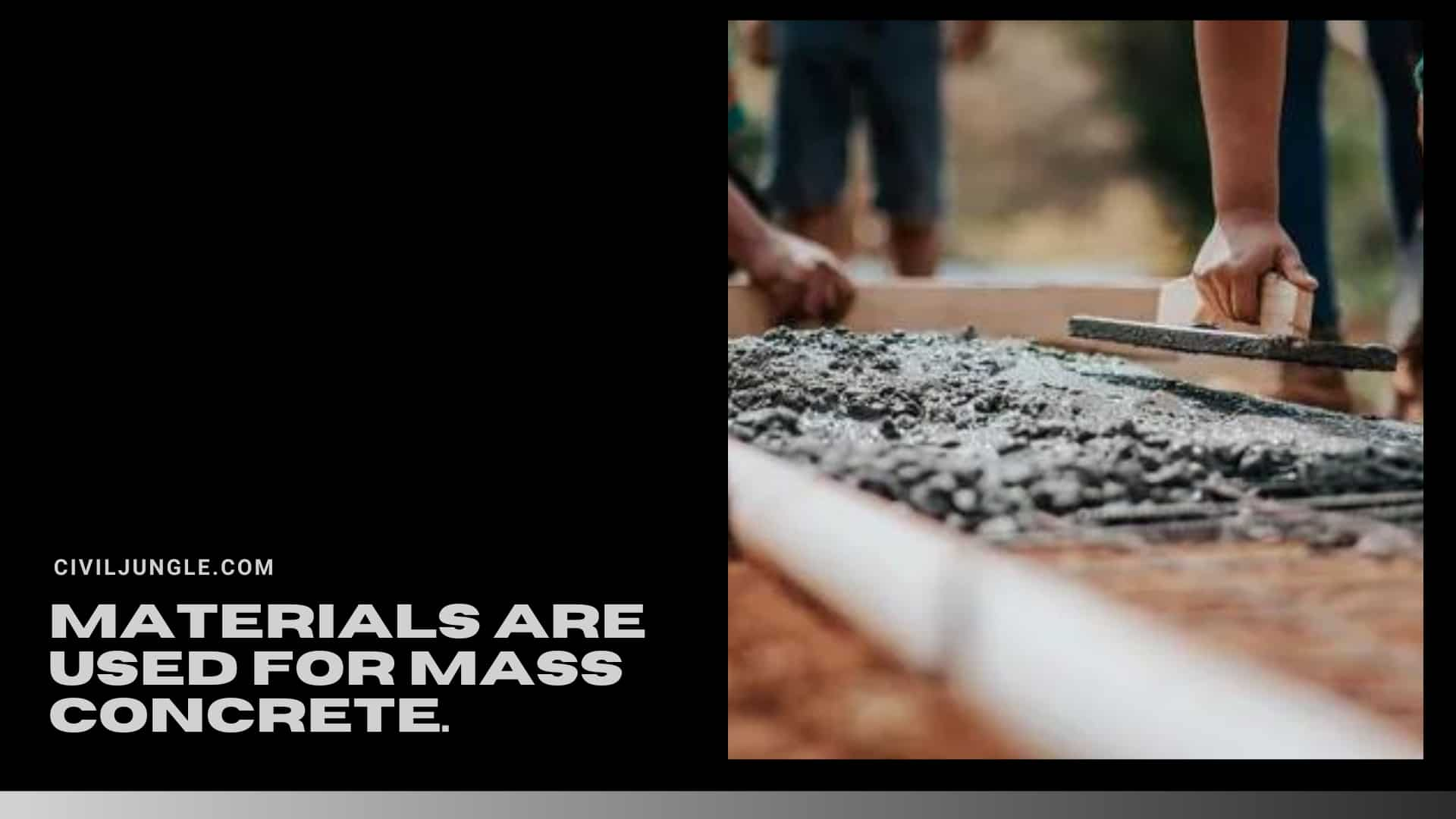
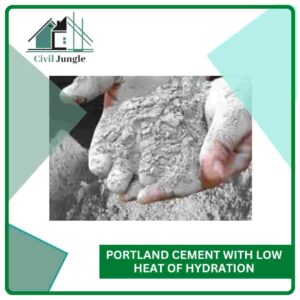
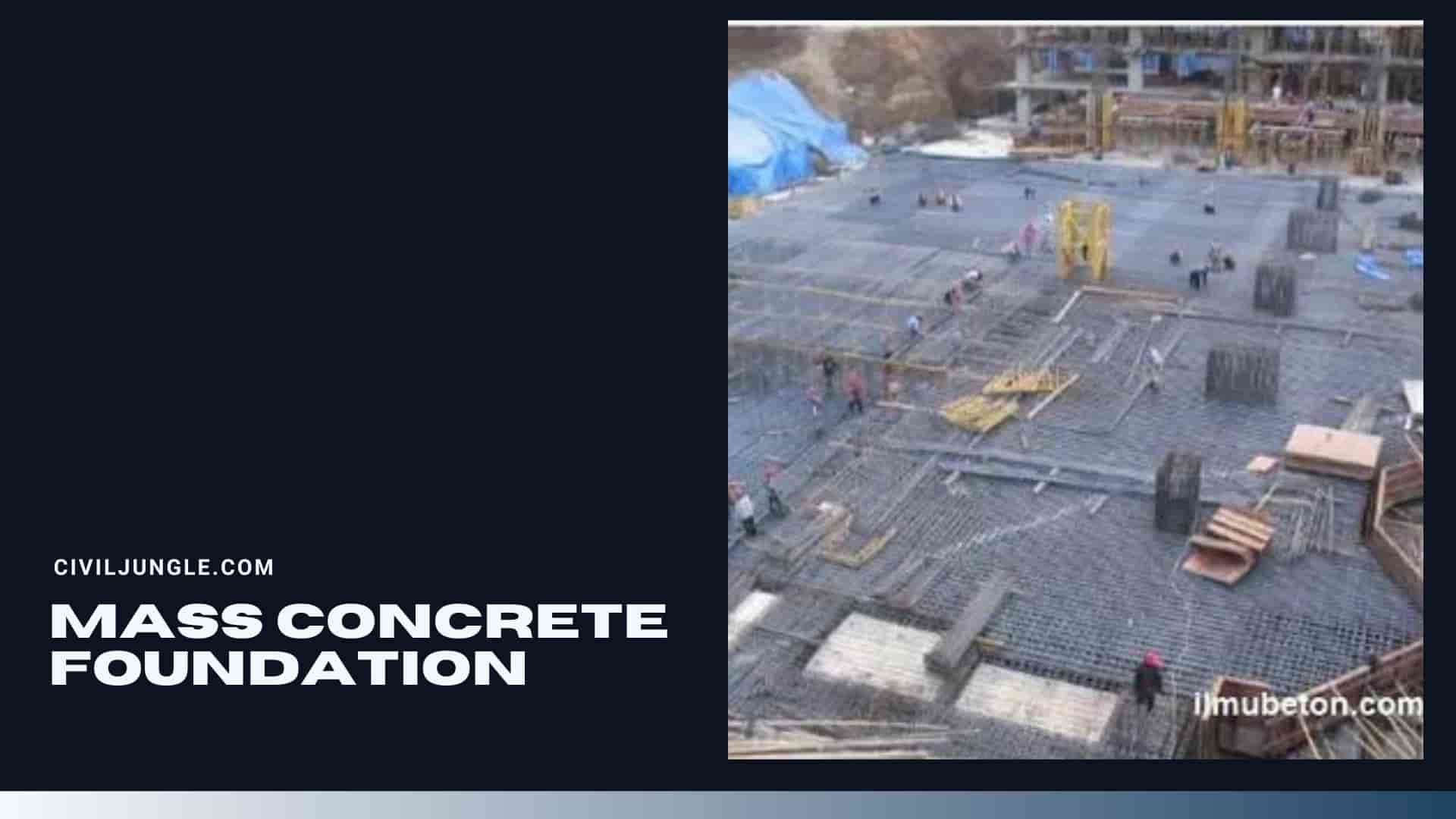
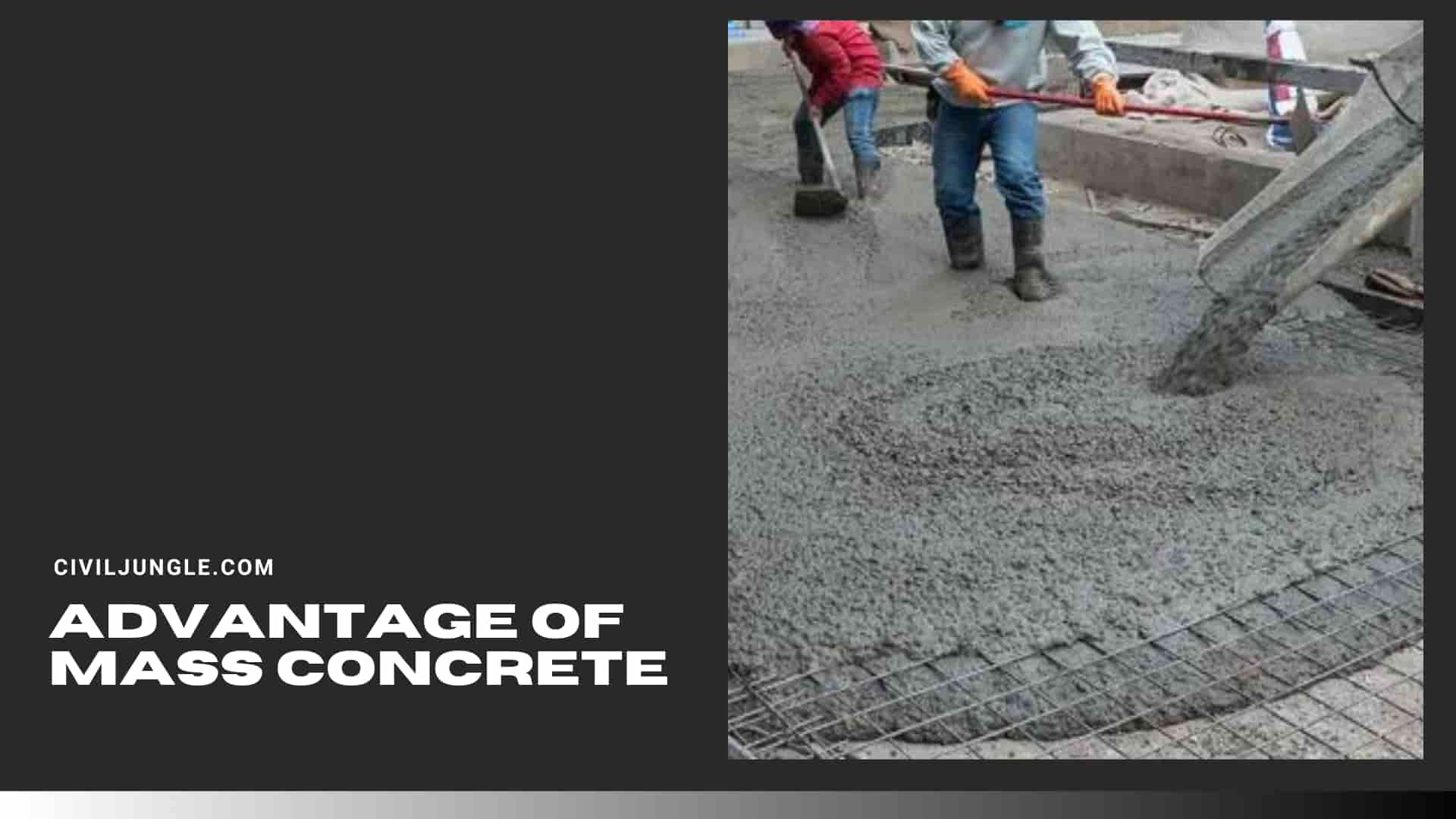
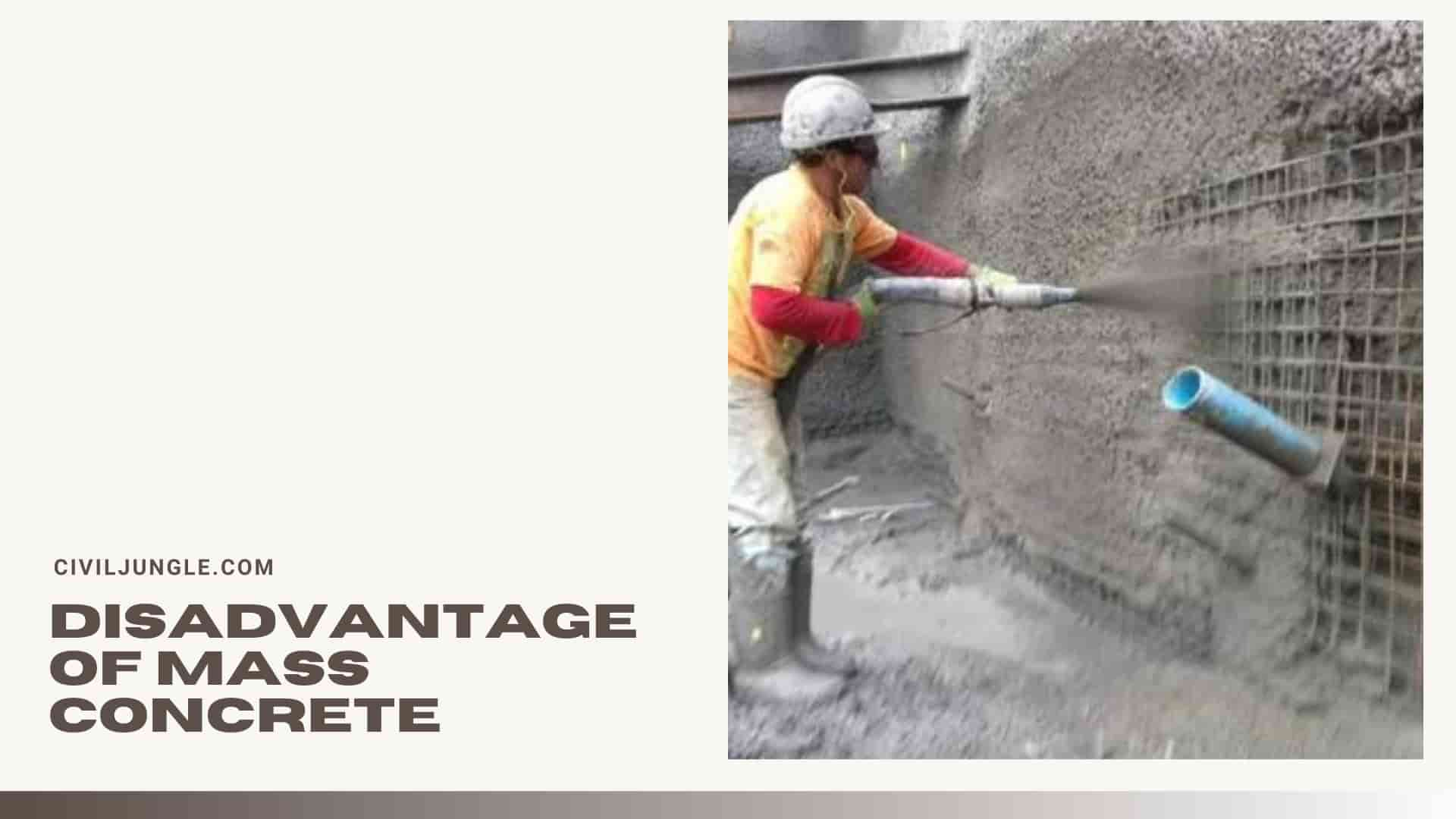

Leave a Reply